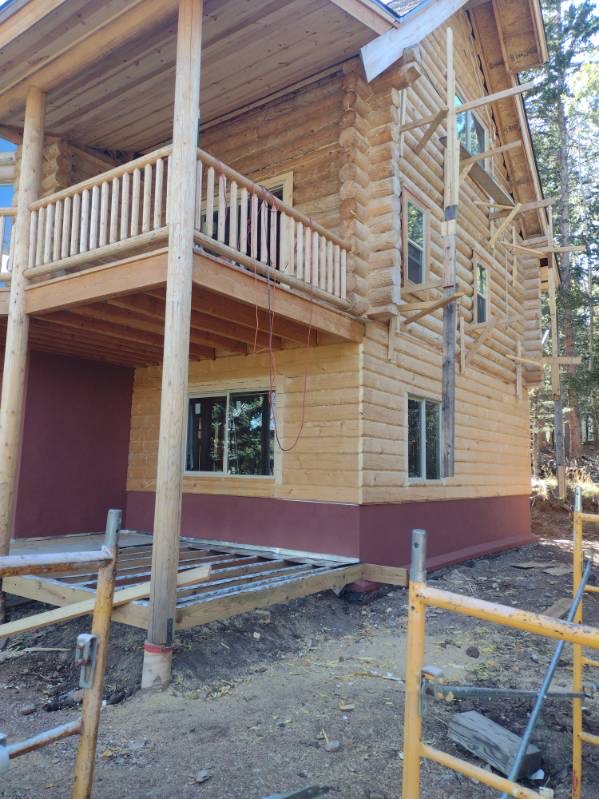
Building a new home is a significant undertaking that requires careful planning, coordination, and attention to detail. Whether you’re embarking on your first construction project or looking to upgrade to a custom-built home, understanding the stages and steps involved can help streamline the process and ensure a successful outcome. Here’s a comprehensive guide broken down into easy-to-read sections:
1. Initial Planning and Preparation
Before breaking ground, thorough planning is essential to lay a solid foundation for your new home construction project:
- Define Your Needs and Goals: Determine your priorities, such as size, layout, architectural style, and budget constraints. Consider future needs and lifestyle factors.
- Select a Location: Choose a suitable plot of land that meets zoning requirements, is accessible to utilities, and aligns with your lifestyle preferences.
- Secure Financing: Consult with lenders to pre-qualify for a construction loan or secure financing based on your budget and creditworthiness.
- Hire a Design Team: Engage an architect or residential designer to create blueprints and design plans that reflect your vision and comply with local building codes.
2. Design and Permitting
This phase focuses on finalizing the architectural and structural plans while obtaining necessary approvals:
- Architectural Design: Collaborate with your design team to develop detailed floor plans, elevation drawings, and specifications for materials and finishes.
- Engineering and Structural Design: Engineers will ensure the structural integrity of the design, including foundations, framing, and load-bearing elements.
- Obtain Permits and Approvals: Submit your plans to local authorities for building permits and zoning approvals. Ensure compliance with all regulatory requirements.
3. Site Preparation and Foundation
Prepare the construction site and lay the groundwork for your new home:
- Clearing and Excavation: Clear vegetation and debris from the site. Excavate to prepare for the foundation, driveway, and utility trenches.
- Foundation Construction: Pour concrete footings and install foundation walls according to engineering specifications. This critical stage sets the base for your home’s structural stability.

4. Framing and Structural Build
Build the framework and structural components of your home:Framing: Erect the structural frame using wood or steel beams. This includes walls, floors, and roof trusses, creating the skeleton of your home.
- Roofing: Install roof sheathing, underlayment, and roofing materials to weatherproof the structure and protect against the elements.
5. Mechanical and Electrical Systems
Install essential systems to support the functionality and comfort of your home:
- Plumbing Installation: Rough-in plumbing lines for water supply, drainage, and gas lines.
- Electrical Installation: Install wiring, outlets, switches, and fixtures. Plan for lighting, heating, ventilation, and air conditioning (HVAC) systems.
6. Exterior Finishes
Enhance curb appeal and weatherproof your home’s exterior:
- Exterior Finishes: Apply siding, stucco, brick, or other materials to the exterior walls. Install doors, windows, and trim for aesthetics and energy efficiency.
- Landscaping and Grading: Grade the land around your home for proper drainage. Plan landscaping features such as lawns, gardens, and pathways.
7. Interior Finishes
Complete interior spaces with attention to detail and craftsmanship:
- Drywall Installation: Hang drywall panels and apply joint compound for smooth walls and ceilings.
- Interior Trim and Doors: Install baseboards, trim moldings, doors, and hardware throughout the home.
- Flooring: Lay flooring materials such as hardwood, tile, carpet, or laminate.
8. Cabinetry, Fixtures, and Appliances
Furnish your home with functional elements and personalized touches:
- Cabinetry and Countertops: Install kitchen and bathroom cabinets, countertops, and backsplashes.
- Fixtures and Appliances: Mount sinks, faucets, toilets, showers, bathtubs, and kitchen appliances.
9. Final Inspections and Certifications
Ensure compliance with building codes and regulations:
- Inspections: Schedule final inspections for plumbing, electrical, and structural components. Obtain certificates of occupancy and compliance.
- Punch List: Address any remaining touch-ups or deficiencies identified during inspections.
10. Move-In and Enjoy
Prepare for the exciting moment of moving into your new home:
- Final Clean-Up: Clean interior spaces and remove construction debris.
- Utilities Activation: Coordinate with service providers to activate utilities such as electricity, water, and gas.
- Celebrate: Celebrate the completion of your new home and enjoy the fruits of your labor!
Building a new home involves a series of steps that require careful planning, coordination, and collaboration with professionals. By following this comprehensive guide, you can navigate each stage of the construction process effectively, ensuring a smooth and successful journey toward your dream home. Whether you’re building in Fountain, CO, Fort Carson, CO, Canon City, CO, Colorado Springs, CO, or any surrounding areas, partnering with experienced professionals like CustomHomeRenovate can make all the difference in achieving your vision with confidence and peace of mind.

